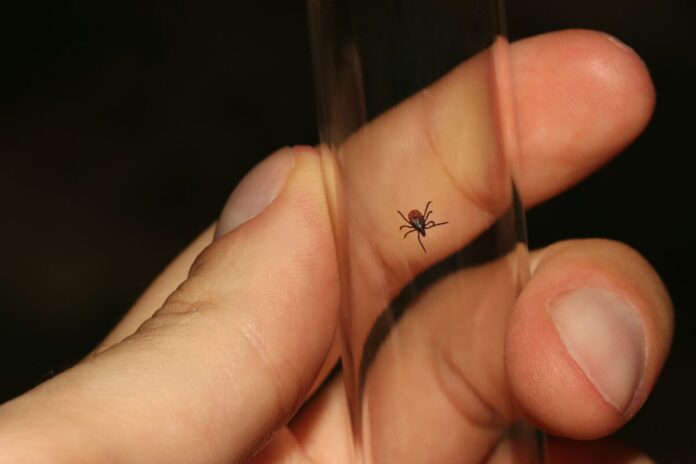As the weather warms up and ticks and mosquitoes become more active, the New Hampshire Department of Health and Human Services (DHHS), Division of Public Health Services (DPHS) is providing tips for preventing tick and mosquito bites.
“The best way to protect yourself from illnesses spread by ticks and mosquitoes is to prevent bites,” said State Epidemiologist Dr. Benjamin Chan. “Everyone can take simple steps to protect themselves and stay healthy as they enjoy the New Hampshire outdoors.”
While ticks can be active year-round, the risk of bites increases as the snow melts and ticks begin to emerge from the leaf litter. In New Hampshire, ticks are typically most active from April to November. Deer tick nymphs, which are thought to cause most tick-borne illnesses, are usually most active from May to July. The most common tickborne illness in New Hampshire is Lyme disease, but ticks can spread other pathogens, like Powassan virus, anaplasmosis, and babesiosis.
Mosquitoes are also more active during warmer months in New Hampshire and may bite during the day or night. There are three diseases that circulate among mosquitoes in the state: Jamestown Canyon Virus (JCV), Eastern Equine Encephalitis Virus (EEEV), and West Nile Virus (WNV). Whereas the risk of JCV begins increasing in the spring, the risk of EEEV and WNV increases through the summer and fall as the viruses spread among animal populations.
Diseases spread by ticks and mosquitoes often cause flu-like symptoms, including fever, muscle aches, headaches, and fatigue. In some patients, the diseases may cause serious complications, including neurological problems. Anyone who develops these symptoms after a bite should contact their healthcare provider.
Fortunately, there are steps everyone can take to prevent tick and mosquito bites, as well as the diseases they may cause:
- Protect yourself from bites. Wear insect repellents and treat clothing with permethrin. When outside, wear protective clothing such as socks, long-sleeved shirts, and long pants. Wear light-colored clothing, which makes it easier to spot ticks.
- Check yourself for ticks. After being outside, check your body for ticks. If you find a tick that has bitten you, remove it as soon as possible with a pair of tweezers to lower your risk of illness. Consider using the Tick Bite Bot to help you decide when to contact your healthcare provider. To get rid of any loose ticks that haven’t bitten yet, shower as soon as possible and wash and dry your clothes on high heat after coming indoors.
- Take precautions in tick and mosquito habitats, including forests, marshes, trails, and tall grasses. Stay on cleared paths to help reduce the risk of tick bites.
- Reduce the number of ticks and mosquitoes around your home. Clear leaf litter, tall grass, or brush around your home and mow the lawn frequently. Remove or cover outdoor items with standing water, where mosquitoes lay their eggs. Install or repair window and door screens to prevent mosquitoes from entering your home.
Please call DPHS at 603-271-4496 with any questions about diseases spread by ticks and mosquitoes. For more information about ticks and mosquitoes, the illnesses they spread, and how to prevent bites, visit the DHHS Tickborne Diseases webpage and the DHHS Mosquito-Borne Illnesses webpage.
